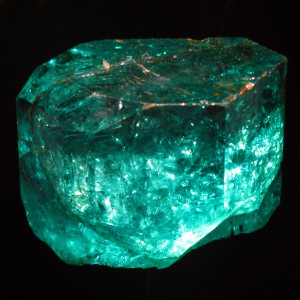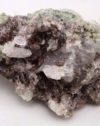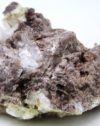HISTORY, NAME, LOCALITIES: Emerald, which has been known since antiquity, was recognized as a variety of beryl in 1790. The name “emerald,” pronounced EMM-rald, stems from the Greek smaragdos, a general term for any green gemstone. Notable collecting localities are in Colombia, Canada, Namibia, Brazil, Pakistan, Afghanistan, Russia, Madagascar, China, and the United States (North Carolina).
MINERALOGY, PROPERTIES, OCCURRENCE: Emerald, the green, gem variety of beryl [beryllium aluminum silicate, Be3Al2Si6O18], crystallizes in the hexagonal system as well-developed, six-sided, transparent-to-translucent prisms. It has a pure green color, a vitreous luster, a Mohs hardness of 7.5-8.0, and a specific gravity of 2.6-2.9. The emerald variety of beryl occurs primarily in metamorphic environments and, to a lesser extent, in granite pegmatites.
METAPHYSICAL PROPERTIES, LORE, USES: Emerald has always been a highly valued gemstone. The ancient Greeks associated green emerald with Venus, the goddess of love. Transparent, deeply colored emerald is a precious gemstone that is usually faceted into classic square-cut and rectangular-cut gems that are rarely larger than two or three carats. Metaphysical practitioners consider emerald to be a stone of successful love that provides inspiration and patience, balance between partners, domestic bliss, and contentment and loyalty. Emerald has no technological uses.
COLLECTORS’ INFORMATION: Emerald is collected for its rarity, pleasing green colors, well-developed crystals, and occurrence in attractive composite specimens, especially those with a white-marble matrix.





 Axinite #10
Axinite #10  Axinite #8
Axinite #8